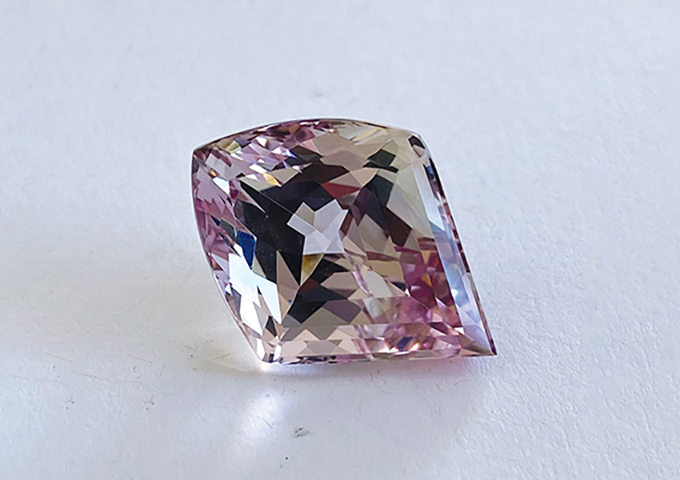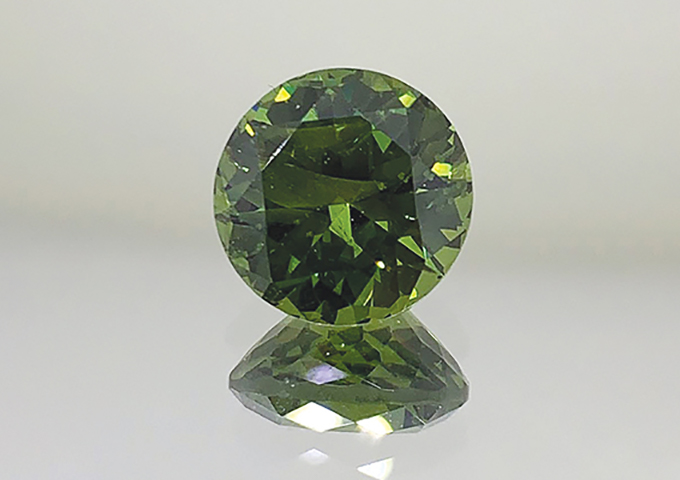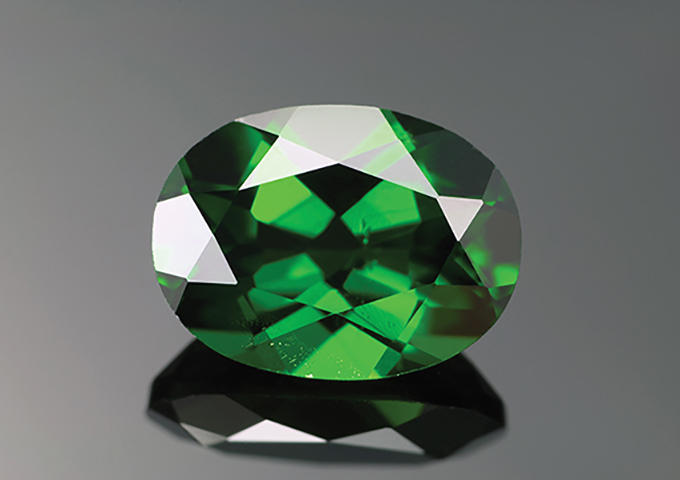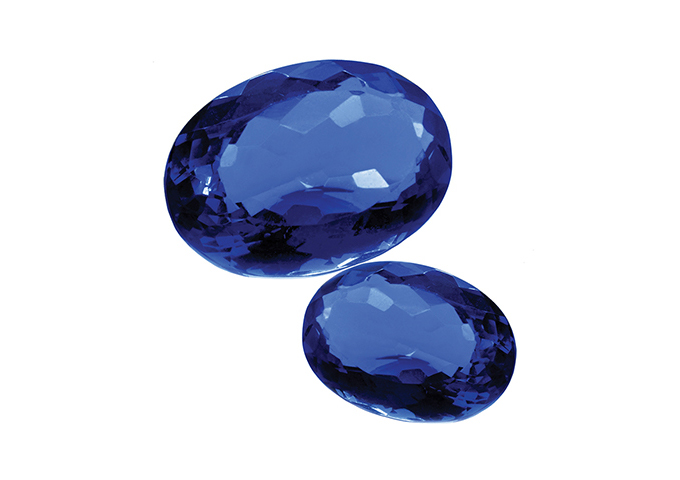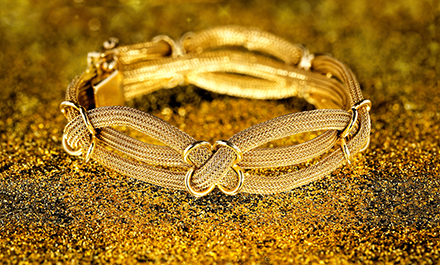A refreshing breed of coloured gemstones is turning heads in the international jewellery trade. From pristine pink zoisites to fiery yellow-orange sphalerites, discerning buyers are increasingly diversifying their coloured gem options.
With a multitude of coloured gemstones available in the market today, consumers have at their disposal an ever-expanding assortment of choices, including non-conventional gems that are gradually catching up with their more popular counterparts in terms of demand and consumer interest.
Apart from the winning trio of rubies, sapphires and emeralds, a great deal of coloured gems has since risen in status in the trade. Among the most favoured and commercially successful of these are tanzanite, tourmaline, spinel, peridot, opal, aquamarine, amethyst and garnet, to name a few.
Their soaring prominence is largely attributed to mainstream use by leading jewellery maisons: A necklace adorned with an exceptional 131.21-carat spinel centre gem by Bulgari; an eclectic Brazilian aquamarine collection that includes rings, necklaces and earrings by Van Cleef & Arpels; and a variety of Boucheron jewellery pieces with tanzanite as centre stones.
Influenced by buyers' constantly evolving preferences – shaped primarily by trade developments, increased awareness and education, and evolving social conventions – a number of lesser-known, non-traditional gemstones are gaining steam in the industry of late, particularly in mature gemstone and jewellery markets such as the US and Japan.
Beauty in rarity
At the centre of Noor Gems Japan Co Ltd’s booth at a recent jewellery exhibition in Hong Kong was a large pink gemstone, stunning in its subtle rosy hue and patent singularity. The uniquely facetted stone – a 19.06-carat pink zoisite – is in fact a pink tanzanite, according to the company’s Temur Ansari.
“This gemstone is very rare. It is natural and unheated and comes in a special kite shape, which accentuates its exceptional colour and lustre,” noted Ansari. The stone sells for US$3,000 per carat.
The highly admired tanzanite in vivid violet-blue colours is actually the blue variety of the mineral zoisite. Thanks to Tiffany & Co’s relentless efforts to feature the stone in its iconic collections, the blue tanzanite as we know today has amassed a huge following over the years. The jeweller coined the name tanzanite – based on the origin of the stone in Tanzania, East Africa.
The rich blue hue of tanzanite can be achieved by heating natural zoisite, which comes in an array of colours including green, yellow, orange and, in very rare instances, pink. According to ASJ Gems, pink is the rarest of all zoisite colours and perhaps the most sought after by collectors.
Another unique gemstone offered by Noor Gems is a pair of hemimorphite cabochons from Brazil weighing 103.51 carats in total. The gems exhibit an electric blue hue almost akin to a Paraiba tourmaline. The stone, which ranks 3.5 on the Mohs scale, is quite soft and is most suited for pendants or earrings. Smaller gems are best for rings, Ansari added.
The gems sell for US$200 to US$500 per carat. The company official said hemimorphite is especially favoured by Japanese buyers.
The Gemological Institute of America (GIA) earlier tested a 5.61-carat semi-transparent blue cabochon in its New York laboratory for a Paraiba tourmaline origin report. The gem possesses the same captivating blue colour and other internal features. Using Raman spectroscopy, GIA confirmed the stone’s identity as hemimorphite – a zinc silicate, whose purest form is white or colourless. Impurities however produce different colours: Copper for a bluish and greenish tint, ferrous iron for green, and ferric iron for brown.
Noor Gems also offers a rare demantoid – the largest ever mined from Russia at 56.48 carats. The gem is valued at US$40,000 per carat.
Fiery possibilities
Two especially resplendent stones likewise commanded attention at SM Gems Ltd’s display windows – sphalerite and rhodonite.
Sphalerite, an orangey-yellow gemstone from Spain, is favoured for its extraordinary glow that brings to mind iridescent colours of the sunset. According to KK Kwan of SM Gems Ltd, sphalerites are most ideal for pendants. The gems sell for US$200 per carat.
Sphalerites’ dispersion level is three times higher than that of a diamond – 0.156 compared to 0.044, respectively. The higher a stone’s dispersion value, the more colourful flashes it can display. High-dispersion gems have exceptional fire, which refer to flashes of colour when the stone is moved under a source of light.
This type of gem is especially desired by collectors, explained Kwan.
Rhodonite from Brazil – a red or pinkish gemstone – is also attracting buyers nowadays. The gem, which could fetch around US$300 per carat depending on the quality, is best used for pendants.
Rhodonites are typically fashioned into cabochons, beads, small sculptures, tumbled stones and other lapidary projects. Gem-quality faceted rhodonite has a deep, mesmerising colour and is extremely rare. It is also one of the most difficult gemstones to cut.
Kwan revealed that both sphalerite and rhodonite have a strong following in the US and Japan.
Mysterious gems
Hong Kong-based Fancy Gem House meanwhile offers a treasure trove of coloured gemstones and among these are promising gems that are gradually gaining traction globally.
According to Abdul Azeez Jaburulla, president of Fancy Gem House, the market is increasingly on the lookout for fresh coloured gemstone alternatives. Among these is chrome diopside from India, a vivid green gem that is rich in chromium – the same mineral that gives emeralds its opulent green hue. According to the American Gem Trade Association, chrome diopside’s colours range from light to bright green and almost black. The bigger the gem, the darker the colour gets. Clarity-wise, the gem comes in transparent and opaque variants. Chrome diopside hails almost exclusively from Inagli in eastern Siberia although deposits have recently been discovered in Pakistan.
Jaburulla said the stone, which is well-liked in India and China, has a hardness level of 5 to 6 on the Mohs scale, making it most suitable for pendants and rings. At present, chrome diopside sells for US$25 per carat.
Kyanite is another stone that is garnering attention in the global trade. It comes in multiple colours but those bearing an intense blue hue are considered the most appealing. “Kyanite from Nepal is popular as a sapphire alternative, thanks to its vivid blue hue that is comparable to sapphires, depending on the quality and the cut,” shared Jaburulla.
It comes in both facetted and cabochon stones and carries a price tag of US$20 to US$200 a carat.
According to gemsociety.org, facetted kyanite appeals mostly to collectors of non-conventional gems or those who fancy artistic gem cuts.
Kunzite from Brazil and Afghanistan meanwhile is highly desired for its ultra-feminine colour range – from pastel pink to vivid purple. Jaburulla revealed that stones originating from Afghanistan tend to be in a deeper colour. “Kunzite is popular among Chinese and Japanese customers. They also come in big sizes and sell for US$30 per carat,” he added.




